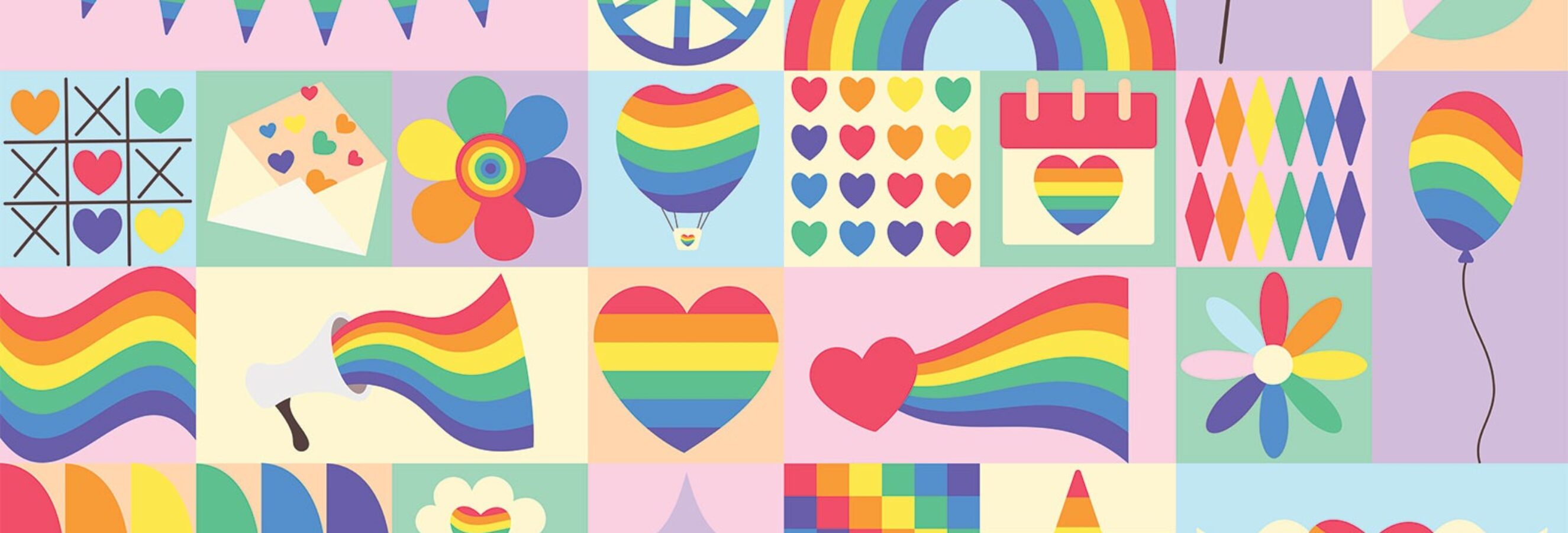In addition to being the right thing to do, there’s a business case for brands and retailers to embed LGBTQIA+ representativeness and inclusivity into their standard business practices. According to the 2021 American Community Survey, out of 130 million households in the USA, 1.2 million were same-sex couple households. And, PEW research finds that about 7% of US residents are lesbian, gay, or bisexual, with another 1.6% of US adults being transgender or nonbinary. For just the USA, this translates into a purchasing power of more than $1 trillion.
Brands and retailers can’t ignore this sizeable market but, at the same time, they must be wary of how their efforts could alienate some customer segments. For example, in 2023, Target’s tuck-friendly bathing suit and Bud Light’s partnership with trans influencer Dylan Mulvaney proved to be controversial marketing strategies that negatively impacted their brands. Given potential risks, brands need to take measured actions to find a suitable middle ground during Pride Month, and throughout the year.
Authentic Pride allyship empowers opportunity
The authenticity of Pride Month marketing campaigns has become a focal point for both consumers and the LGBT+ community. Consumers are increasingly savvy and can distinguish between genuine support and performative allyship. As such, the most effective marketing campaigns aren’t “rainbow-washing” and monetizing from the movement but rather embedded into a brand’s mission and purpose.
Authentic support for the LGBT+ community starts at home through the creation of inclusive workplace policies that appeal to both allies and the community. For example, as far back as 1988, Starbucks has implemented a wide range of LGBTQIA+ inclusive policies including full health benefits for same-sex domestic partnerships, the establishment of guidelines to support transgender people, and promoting marriage equality. As a result, Starbucks has earned the right to be loud with their LGBT+ marketing campaigns. As in previous years, TikTok is once again abuzz with people seeking out Starbuck’s 2024 Pride collection of cups which this year feature designs from queer artist, Sofie Birkin.
Transparency is also crucial for brands wishing to participate authentically in Pride Month campaigns. Even when disapproval is loud, authentic brands are open about their efforts by sharing how and which LGBT+ organizations they support. By sharing extensive details on their websites, Nike and Levi Strauss & Co have also earned their place as loud allies for the LGBT+ community.
Prideful partnerships with influencers
Partnering with influencers for Pride marketing campaigns serves multiple purposes. First, it helps brands and retailers create authentic and impactful connections with the LGBTQ+ community beyond superficial representations.
Further, collaborating with influencers who have a strong and trusted following within the LGBTQ+ community can help brands reach a wider audience, making their endorsements more meaningful and effective. These partnerships also serve to foster a sense of community and solidarity that contributes to the broader movement for LGBT+ rights.
Partnerships have become massively important for brands in all types of product categories and 2024 is no different.
- Adidas: Recognizing that more than 40% of the LGBTQIA+ community doesn’t participate in sports regularly, Adidas’ 2024 Pride campaign includes a collection of shoes, clothing, and accessories co-created by Pabllo Vittar, a Brazilian drag queen and singer. The campaign showcases LGBTQIA+ athletes Tom Daley (an Olympic diver), Layshia Clarendon (WNBA player), and Jo Kokkinopliti (Stonewall FC London player).
- Sephora: Sephora features LGBTQ+ makeup artists and beauty influencers in their Pride Month campaigns. They highlight the creativity and diversity of the community through tutorials, interviews, and special Pride-themed product releases. They also foster a digital community called “Trans is Beautiful.”
- Spotify: Spotify has curated Pride playlists and podcasts highlighting LGBTQ+ artists and creators. They’ve also introduced a feature allowing users to create and share their own Pride playlists with special themed artwork.
Pride on the shelves
Product development is a great way for brands to showcase their desire to be more inclusive of the LGBTQIA+ community. Brands can create limited-edition Pride-themed collections that are enhanced with Pride-themed packaging and marketing materials. To top it off, a portion of the proceeds from those sales can be donated to a wide range of LGBTQ+ charities and organizations.
- Target: In spite of the backlash they received in 2023, Target will once again promote their Pride collection with adult apparel, home items, and food and beverage items. They will also highlight brands owned by LGBTQ+ creators.
- Apple: With proceeds from their brightly colored Pride Edition Apple Watch, Apple will be supporting ILGA World and the Human Rights Campaign, two longstanding groups that work towards positive change for the LGBTQ+ community worldwide.
- Abercrombie & Fitch: In addition to releasing a Pride collection of gender-inclusive clothing, Abercrombie & Fitch will also donate $400,000 to the Trevor project regardless of the sales generated by the collection.
Summary
When LGBTQIA+ policies are properly embedded into a company’s purpose and mission, brands can earn consumer permission to actively participate in targeted marketing strategies. Authentically supporting LGBT+ employees and the broader community throughout the year, not just during Pride Month, is the path to earning consumer acceptance of marketing strategies which will drive business growth.
Building a brand purpose that speaks to marginalized communities requires careful understanding of your shoppers and the community around you. The shopper insights experts at Explorer Research have the deep knowledge and tools to help you understand these shoppers, and ultimately build a stronger path to purchase. Get in touch with us to explore your opportunities further.


